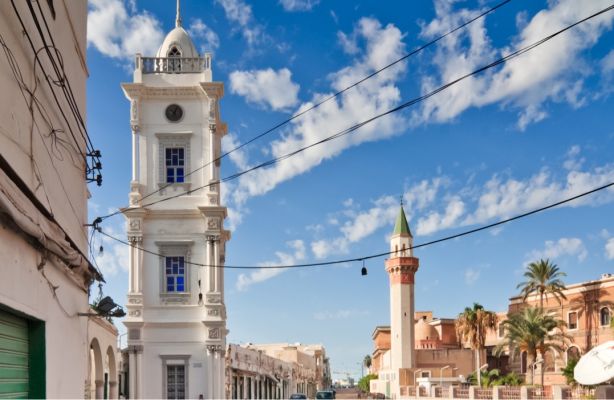Major Cities
Tripoli

TRIPOLI CAPITAL OF LIBYA, ACCOUNTS MORE THAN 2 MILLION RESIDENTS
Benghazi

BENGHAZI SECOND LARGEST CITY OF LIBYA, SITUATED IN THE NORTH EAST
Other Cities
Tripoli

Benghazi

Demography
-
Misurata:
500,000 residents -
Zwara:
400,000 residents
-
Sebha:
300,000 residents -
Al Khoms:
330,000 residents
5.9 M
3.13/km2
Misurata
Zwara
Al Khoms
Sebha
-
Official Language
Arabic is the official language with three distinctive dialects:- Cyrenaican dialect; related to the Arab Alexandrian dialect
- Tripolitanian dialect; similar to the South Tunisian dialect
- Fezzani dialect; closer to classical Arabic (notably that of Khartoum) and which is similar to the Bedouin dialects (Saidi of Egypt and Hassania of Mauritania).
English is the common business language, yet Italian is still widely spoken, especially among senior citizens. French language is hardly ever spoken except within the foreign communities living in Libya and with Libyans having lived abroad. It is noticed that Libyan youth express curiosity and interest in the French language.
-

Religion
The official religion in Libya is Islam. Libyans are all Sunni Muslims of the Maleki rite. Since 1970, alcohol is strictly forbidden in Libya. Its consumption is a judicial crime that carries prison terms. There are approximately 100,000 Christians (foreign community) living in Libya. It is possible to practice Catholicism (two churches are available, one in Tripoli and the other in Benghazi), Protestant (one Anglican church) and Orthodox (one Greek-Orthodox church).
-
Economical Situation
Gross national product (GNP): 30 Billion U.S. Dollars. National currency: Libyan Dinar (LYD). Exchange rate EUR vs. LYD: In March 2005, the official exchange rate was 1 Libyan Dinar to 0.60 euro. However, for cash (bank notes) exchanges, the rate would be 1 Libyan Dinar to 0.66 euro.
-
Climate
The climate is humid and can be very hot in summer on the entire coastal region from Tripolitania to Cyrenaica. In the southern regions, the climate is dry and extremely hot. On the coastal areas, considerable temperature fluctuations can be noted during the same day; whirlwinds coming from the sea or from the southern regions can decrees or elevate temperature levels by a substantial number of degrees within a few hours. Generally, Libya has cold winters and indoor heating is necessary from December through March. During summer, temperatures in Tripoli and Benghazi reach 40° to 45° Celsius with a humidity level ranging between 75% and 95%. Like all Mediterranean countries of Africa, Libya experiences southern winds called “Ghiblis”. These winds blow for several days and mostly appear in Spring, Summer and sometimes in Autumn. Unfortunately, the Ghibli causes much damage and destruction to cultivation due to the dryness it imposes and the sand it carries. During a Ghibli, humidity levels can drop down to 10% and temperatures can reach 40° Celsius.